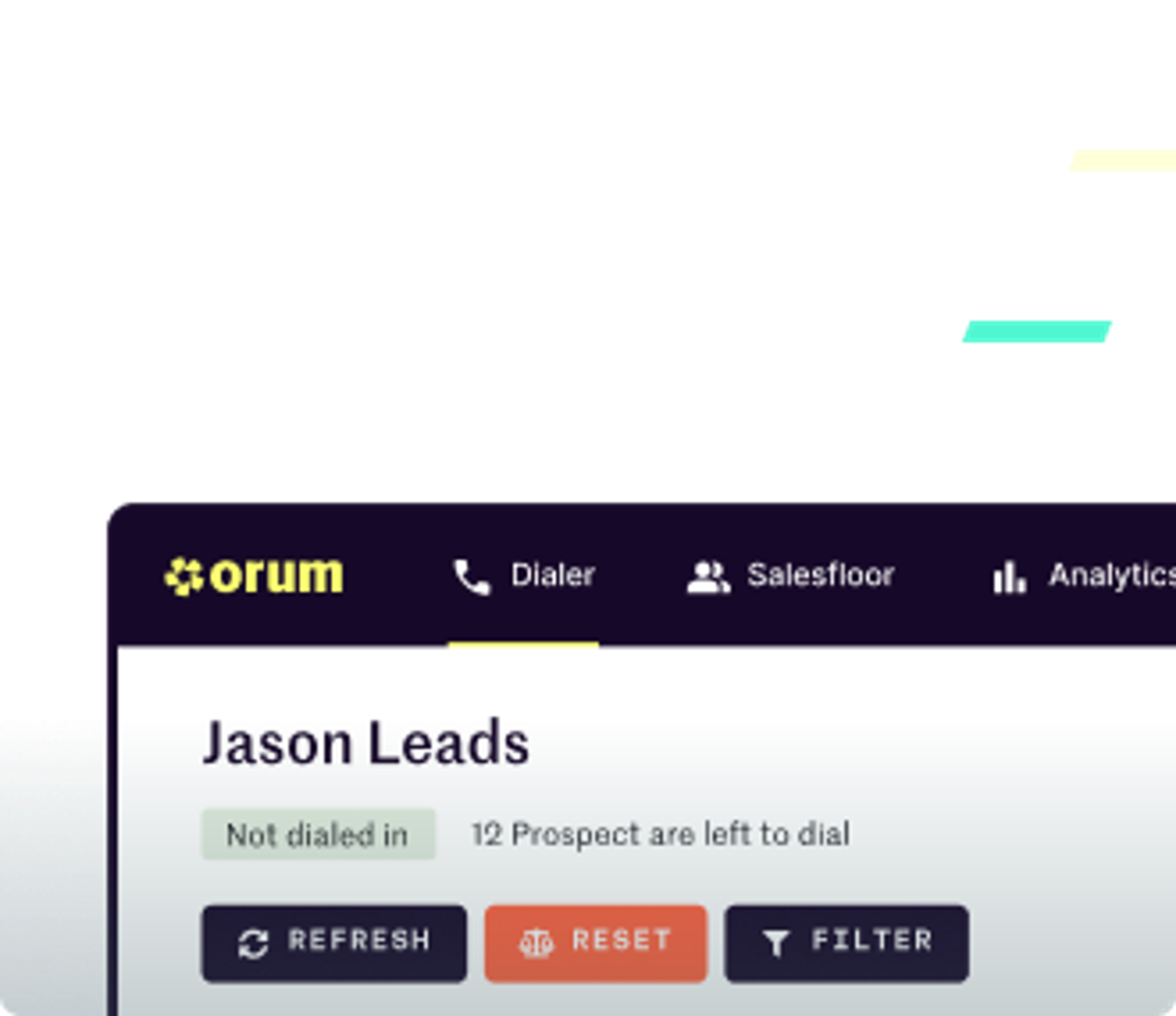SDR Training: Best Practices & Programs for a Continuous Learning Environment

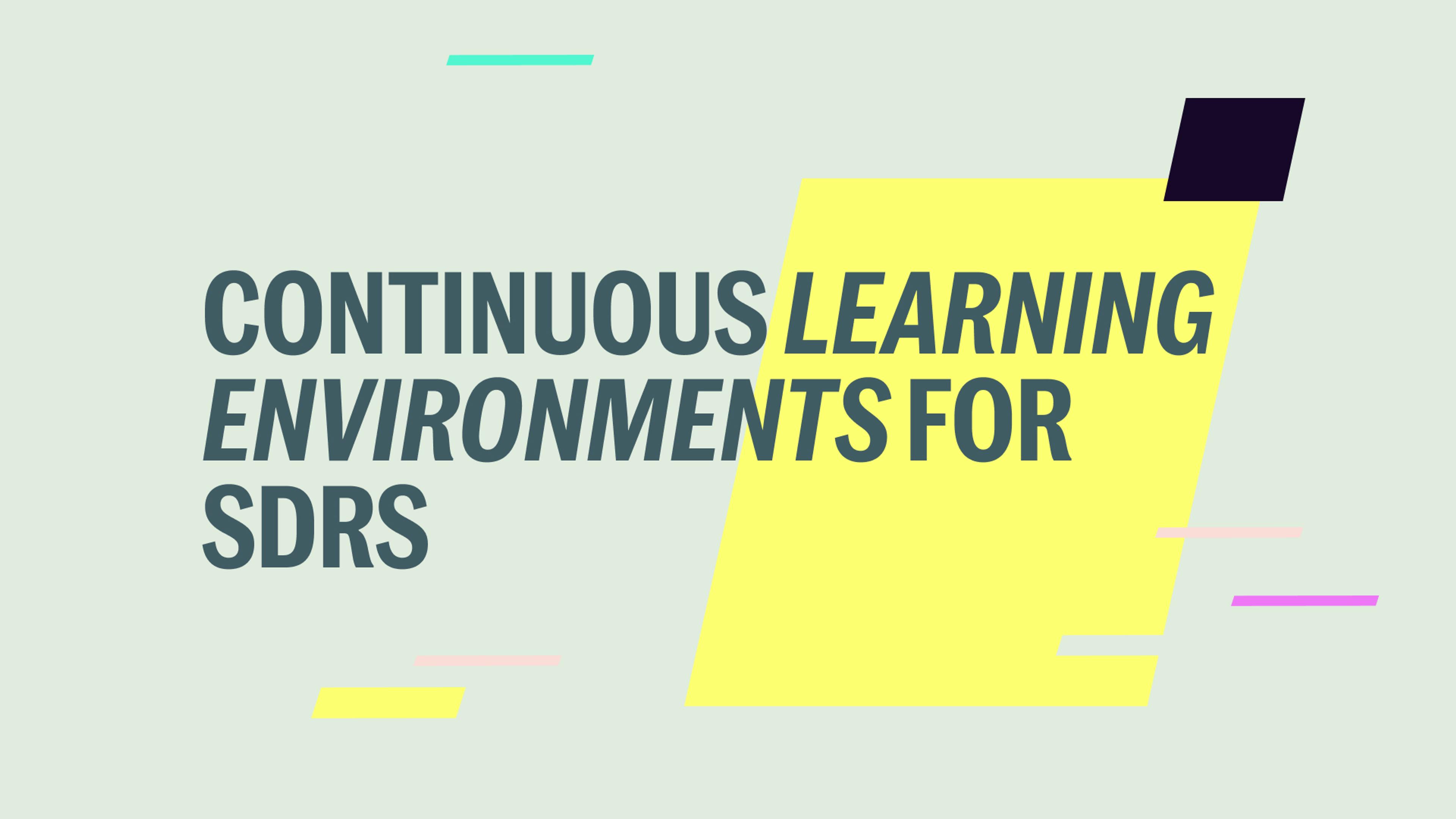
SDRs face constant pressure to hit quotas, handle objections effectively, and keep prospects engaged. Without structured training, reps rely on trial and error, leading to inconsistent performance, missed opportunities, and high ramp-up times.
A strategic, ongoing training program ensures SDRs develop the right skills, refine their approach, and stay sharp over time. By leveraging call analytics, AI-driven insights, and collaborative coaching, you can create a system that drives real improvement—not just one-off training sessions.
This guide covers nine actionable SDR training strategies, including:
- How to use call recordings
- The tools you need for live coaching and peer learning
- 5 expert-led SDR training courses
Whether you’re refining objection handling, optimizing outreach, or integrating external training programs, these best practices will help you build a high-performing SDR team.
Identify and target specific skills gaps
Use AI-powered tools and analysis to enhance your SDR training strategies
9 Strategies to enhance SDR training and performance
A strong SDR training program isn’t just about onboarding—it requires continuous optimization. Effective training builds confidence, improves call execution, and drives better outcomes.
The key is leveraging real-world data and structured coaching to refine skills over time. Here’s how to create a training process that delivers measurable improvements.
SDR Training Strategy #1: Use call analytics for targeted training insights
Without clear performance data, you might base your SDR training on assumptions rather than actual skill gaps. Call analytics provide real-time insights into areas that need improvement, making coaching more precise and impactful.
Track key metrics like talk-to-listen ratio, response time to objections, and call duration trends to identify specific coaching needs. If an SDR struggles with overcoming objections, reviewing these patterns helps pinpoint when and how challenges arise.
For example, with Orum’s real-time dashboards, you can measure individual and team performance, recognize coaching opportunities, and track sales development over time.
Instead of generic feedback, SDRs receive training in direct response to their unique development areas, leading to faster skill growth and measurable improvements in team performance.
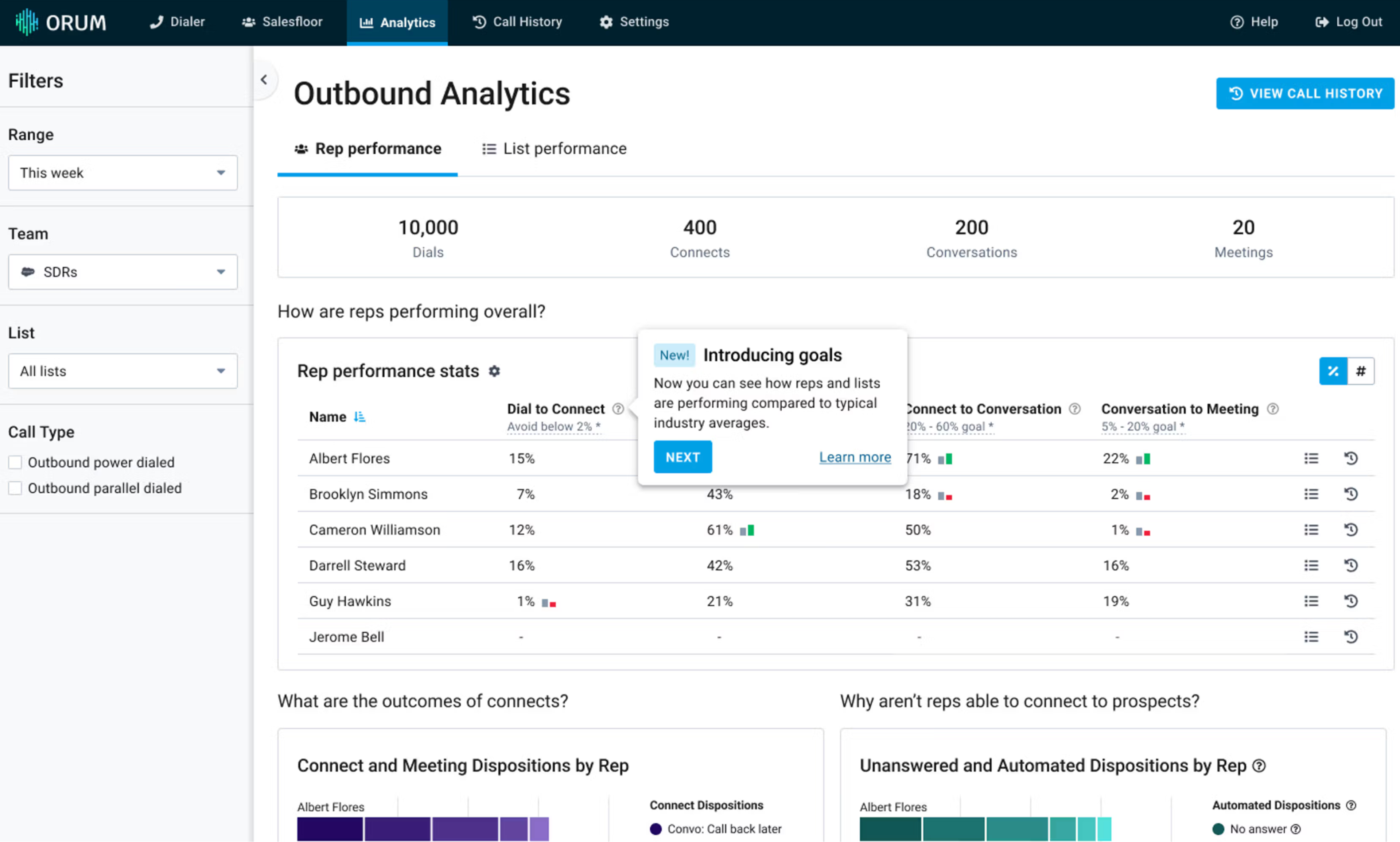
SDR Training Strategy #2: Build a call library for skill development
High-performing SDRs refine their skills by learning from real conversations. A call library allows your team to:
- Review successful interactions
- Analyze different approaches
- Continuously improve their techniques
Curate a repository of top-performing calls, focusing on key moments like effective openers, objection handling, and successful call-to-action execution. Categorize recordings based on common scenarios—cold outreach, follow-ups, or high-intent prospects—so SDRs can easily find relevant examples.
For example, Orum’s Call Library enables you to save and organize recorded calls, creating a structured training resource.
SDRs can review real examples of what works, compare different techniques, and develop a deeper understanding of effective sales conversations. By integrating call reviews into ongoing training, managers and SDRs gain practical insights that improve call execution and shorten the learning curve for new hires.
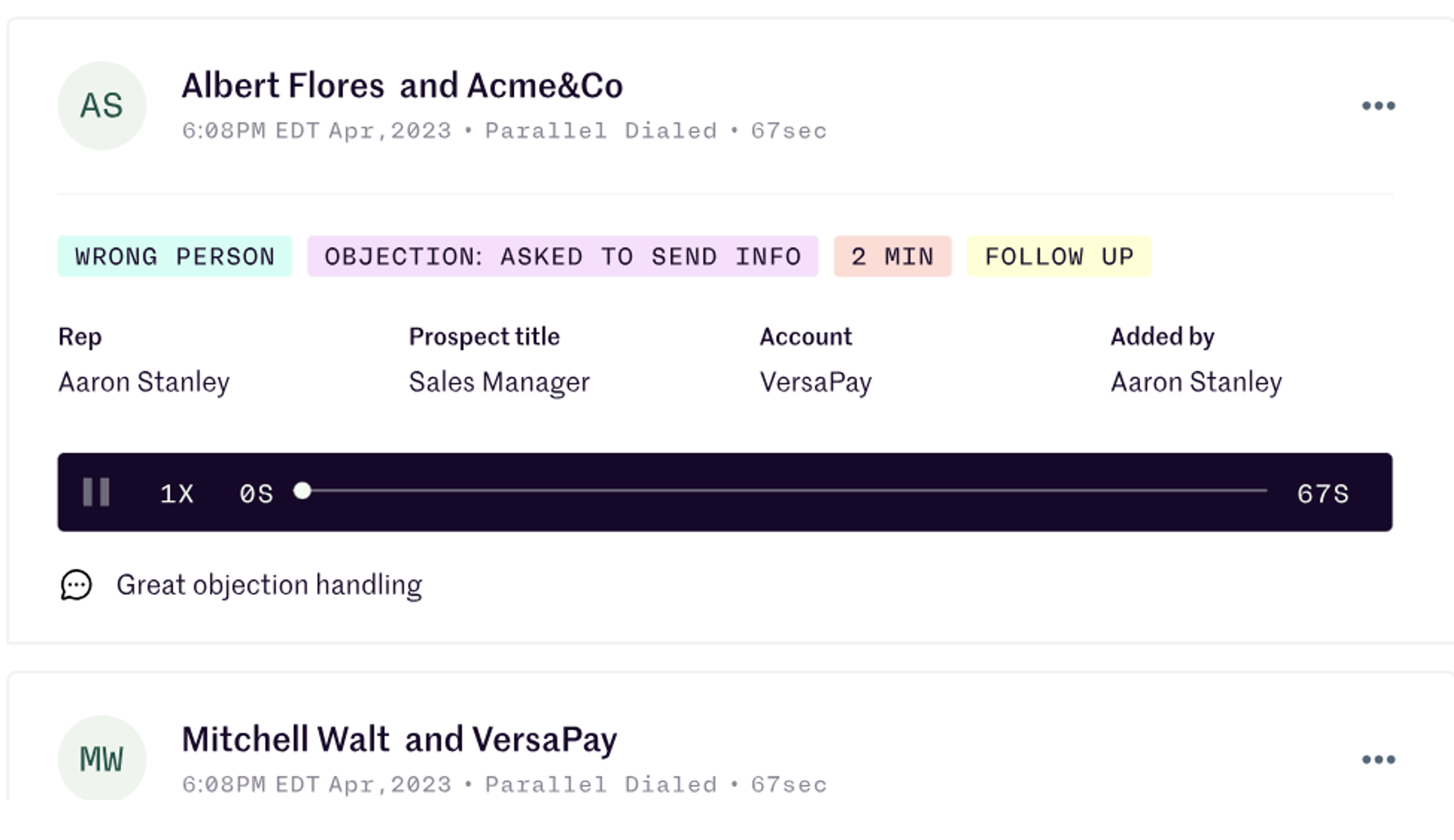
SDR Training Strategy #3: Incorporate live call shadowing for real-time feedback
Live call shadowing allows you to listen in on active sales calls and provide immediate, actionable feedback based on real interactions.
Instead of waiting for post-call reviews, you can identify coaching opportunities in the moment, such as adjusting tone, changing approach when handling an objection, or improving pacing. Shadowing also helps SDRs build confidence, knowing they have support if they need guidance during difficult conversations.
For example, you can use Orum’s live call capabilities to monitor SDR calls in real-time, pinpoint an issue, and provide instant feedback after the conversation.
This ensures your coaching is relevant, timely, and directly tied to real sales interactions. By making live call shadowing a regular part of your SDR training, teams can accelerate learning, reinforce best practices, and achieve better call outcomes.
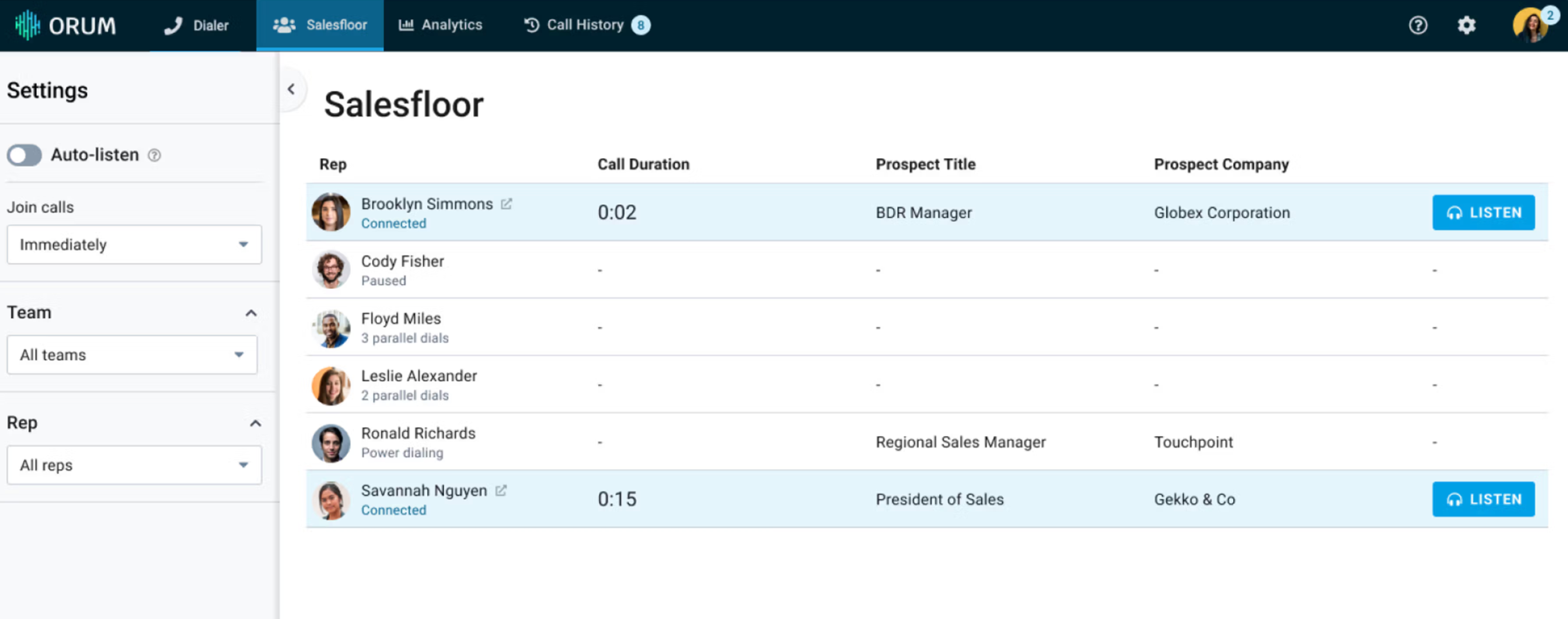
SDR Training Strategy #4: Role-play scenarios using recorded calls
Role-playing helps your SDRs practice handling objections, refining their pitch, and improving overall call confidence. But generic scripts are too often disconnected from real sales situations. Using actual recorded calls makes training more relevant and impactful.
Select recordings that highlight common challenges—hesitant prospects, pricing objections, or tough gatekeepers—and have SDRs role-play both sides of the conversation. This allows them to refine their responses in a realistic setting without the pressure of a live sales call.
For example, Orum’s call recordings provide real-world sales conversations that can be used for training.
SDRs can analyze successful techniques, test different approaches, and get peer or manager feedback in a controlled environment. By incorporating real calls into role-playing exercises, SDRs develop stronger communication skills and become better prepared for live interactions.
SDR Training Strategy #5: Develop personalized learning paths with performance data
A structured learning path helps SDRs progress systematically, building skills over time rather than relying on ad-hoc training. For the best results, create personalized development plans that align with each SDR’s strengths, weaknesses, and career goals.
Step 1: Define core learning stagesBreak the SDR training journey into structured stages, such as:
- Foundational skills (call confidence, using scripts, active listening)
- Intermediate development (objection handling, pacing, rapport-building)
- Advanced techniques (strategic questioning, call control, negotiation)
Step 2: Use performance data to guide progression
Leverage analytics from Orum’s dashboards to determine when an SDR is ready to advance. Set and track KPIs like connect rates, follow-up engagement rates, and objection success rates.
Step 3: Track progress with milestones and feedback loops
Set clear benchmarks and sales quotas for each stage of your reps’ development and schedule regular check-ins where SDRs review progress with managers. Recorded call reviews, peer feedback, and role-play exercises reinforce learning and ensure continuous growth.
A structured learning path keeps SDRs engaged, ensures steady improvement, and helps you proactively develop top performers.
SDR Training Strategy #6: Enhance objection-handling skills through collaborative sessions
Overcoming objections is one of the most critical skills for SDRs, yet it’s often taught through one-off coaching rather than ongoing, team-based training. The best way to refine objection-handling techniques is by analyzing real calls, practicing responses in a collaborative environment, and learning from peers.
Here’s how to build a team-driven approach to objection handling:
- Review both successful and challenging calls
Analyzing real conversations helps SDRs see what works in action. Use both successful objection-handling examples and calls where deals fell apart to highlight different outcomes. Discuss key takeaways as a team. - Run live objection-handling workshops
Hold regular team workshops where SDRs role-play challenging objections, get peer feedback, and test different approaches. This creates a low-risk environment where reps can refine their delivery before handling objections on real calls. - Pair SDRs for peer-led coaching
Encourage SDRs to review each other’s objection responses and provide feedback. A peer-driven approach fosters collaboration and helps reps learn from different selling styles. - Use a virtual salesfloor for real-time learning
For hybrid or remote teams, Orum’s Salesfloor allows SDRs to listen in on live calls, observe top performers handling objections, share their screens, shadow each other, and collaborate.
By turning objection handling into an interactive, team-driven process, SDRs improve their ability to navigate tough conversations, leading to higher conversion rates and stronger sales outcomes.
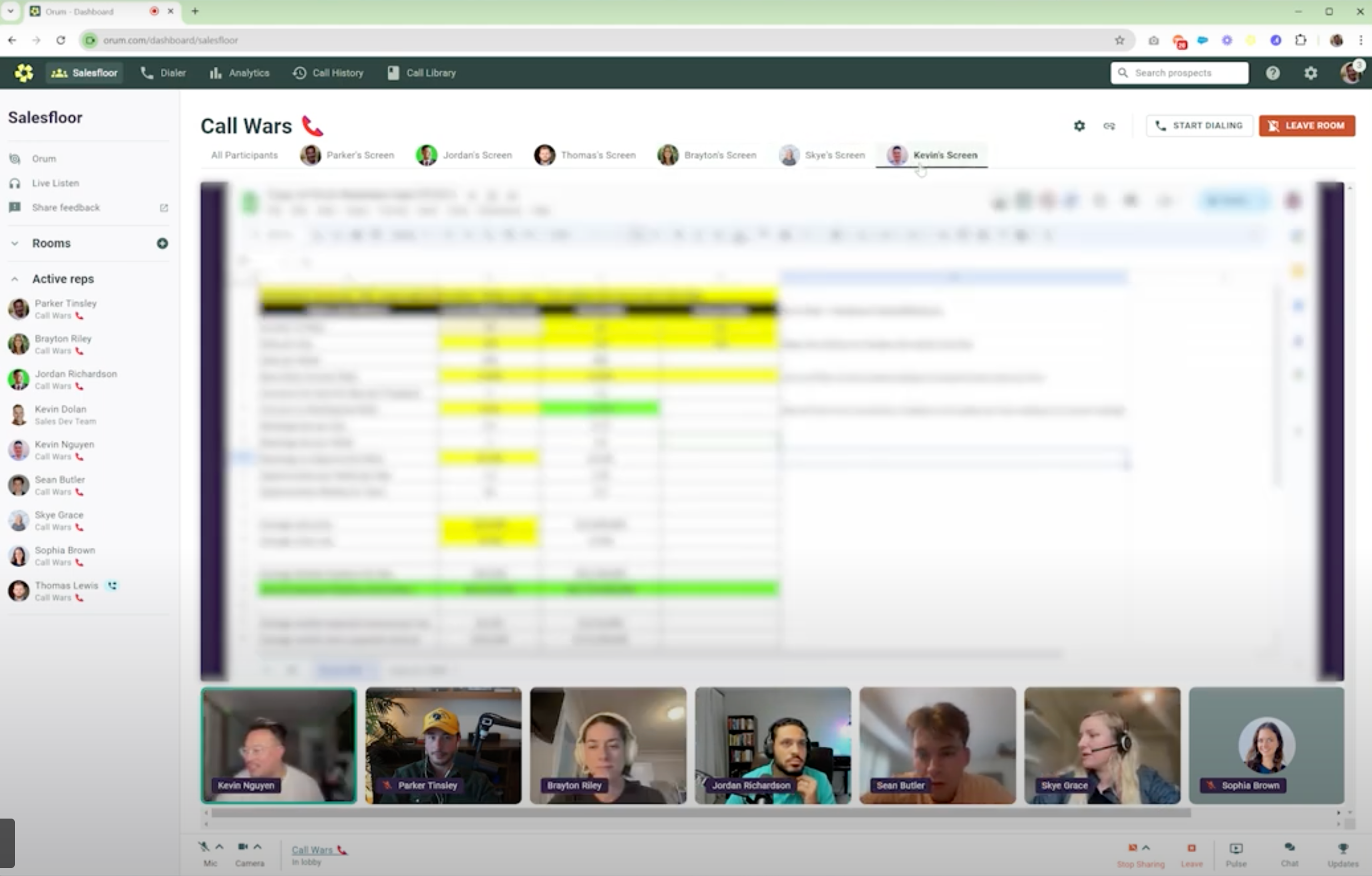
SDR Training Strategy #7: Use AI-powered insights for key call data
AI-powered platforms analyze vast volumes of data to identify issues and optimize sales strategies at scale—far beyond what manual processes can achieve.
Rather than relying on intuition or selective call reviews, you can use AI to automate dialing efficiency, detect human connections, and streamline outreach based on real-time insights.
For example, with Orum’s AI-powered dialer, processes, and insights, you can:
- Increase live connections with AI-driven dialing
Use AI-powered dialers to filter out bad numbers and voicemails, so reps spend more time talking to real prospects instead of wasting dials. - Accurately identify what to focus your coaching on
Track trends like call duration, drop-offs, and successful connect rates to refine scripts, adjust pacing, and improve SDR performance. - Optimize call timing
Analyze past connect rates to find the best times to call then adjust dialing schedules based on thousands of data points from across your sales team.
By leveraging AI-powered insights, SDR teams can increase efficiency, improve coaching precision, and maximize live connections—without adding manual workload.
SDR Training Strategy #8: Promote a culture of feedback with recorded calls
Ongoing feedback is essential for SDR growth, but it’s most effective when structured and tied to real conversations. Recorded calls create a continuous learning loop, allowing SDRs to self-review their performance, receive targeted coaching, and refine their approach over time.
Encourage SDRs to review their own calls
Before a coaching session, have reps listen to their own calls and identify issues—such as talk speed, objection handling, or missed opportunities. Self-assessment builds accountability and helps SDRs internalize feedback more effectively.
Create structured coaching sessions
Instead of giving vague feedback, managers should highlight specific moments in a call where an SDR excelled or struggled. Use real examples to refine messaging, tone, and response strategies.
Facilitate peer learning
Encourage SDRs to review and discuss each other’s calls in small group sessions. Learning from different approaches helps reps refine techniques and gain new perspectives.
By fostering a structured, team-driven feedback culture, SDRs have more opportunity to continuously improve and realize more ambitious quota attainment.
SDR Training Strategy #9: Integrate external courses with these best practices
Even with strong internal training, external courses provide fresh perspectives, structured learning paths, and expert insights that can further develop your SDRs. The key is to integrate these courses seamlessly with your team’s existing training framework so they reinforce core skills.
Apply external lessons to real calls
Encourage SDRs to bring insights from training programs into team discussions. Assign follow-up exercises, such as applying a new technique on a live call or reviewing how external frameworks compare to your internal best practices.
Blend external and internal training for continuous growth
A structured mix of external learning and tools like Orum’s analytics, call reviews, and peer coaching helps SDRs apply new knowledge in a way that drives results.
Choose courses that align with your sales process
Select courses that complement your pipeline stages, objection-handling techniques, and outreach strategies to ensure consistency. Here’s a selection of SDR training courses to help kick off your research:
- SDR Nation Training Courses
SDR Nation offers on-demand and live training tailored for Sales Development Representatives. The program covers essential skills such as cold calling, video prospecting, and email writing, providing a comprehensive foundation for SDRs. - Salesforce Sales Development Representative Professional Certificate
Hosted on Coursera, this professional certificate program by Salesforce encompasses multiple courses designed to equip SDRs with the necessary skills to excel in tech sales. Topics include groundwork for success, conversational selling, and boosting productivity through tech tools. - The Ultimate Sales Development Rep Training Program
Available on Udemy, this program aims to teach everything needed to succeed in a B2B sales role. It covers aspects like researching, prospecting, managing, and closing revenue-generating opportunities, making it suitable for aspiring SDRs, BDRs, or Account Executives. - Factor 8's SDR/BDR Training
Factor 8 offers customized training programs for SDRs and BDRs, focusing on practical skills like effective cold calling, objection handling, and qualifying leads. The training is designed to fill the top of the sales funnel by increasing opportunities and improving conversation quality.
By integrating external courses strategically, you can create a well-rounded, evolving SDR training program that effectively engages and develops your team.
Building an impactful SDR training program
A strong SDR training program isn’t just about onboarding—it’s about continuous development. By integrating real-time analytics, collaborative coaching, and AI-driven insights, you can create a training environment that keeps SDRs improving over time.
Structured learning paths, live call reviews, and role-playing ensure reps refine their skills, while external courses provide fresh perspectives. Tools like Orum’s analytics, call recordings, and virtual salesfloor help reinforce best practices and accelerate skill development.
The key is to make training an ongoing, integrated process—one that aligns with everyday sales challenges and adapts to evolving strategies. When SDRs have access to data-driven coaching and hands-on learning, they ramp up faster, engage prospects more effectively, and consistently improve performance.
Identify and target specific skills gaps
Use AI-powered tools and analysis to enhance your SDR training strategies
